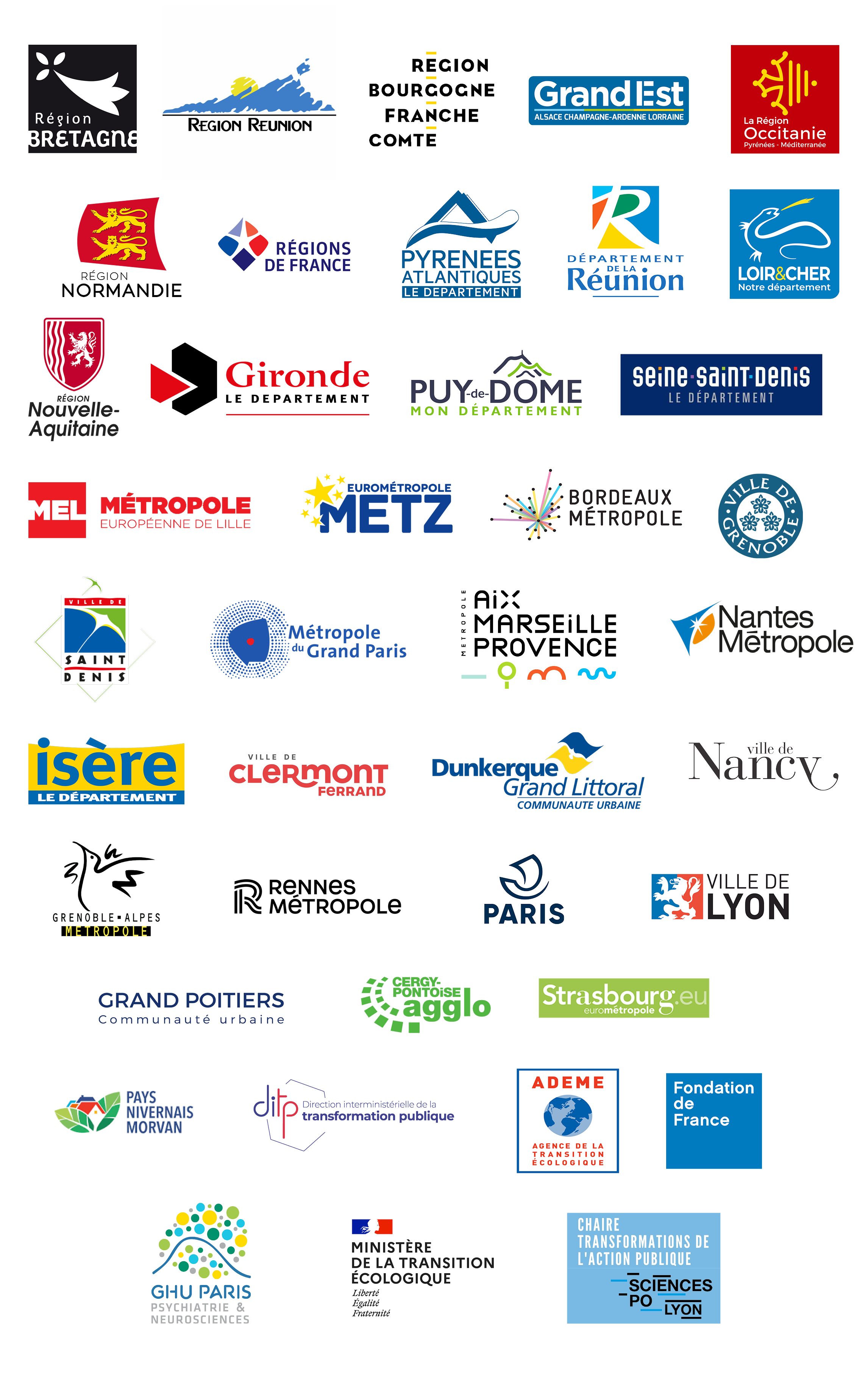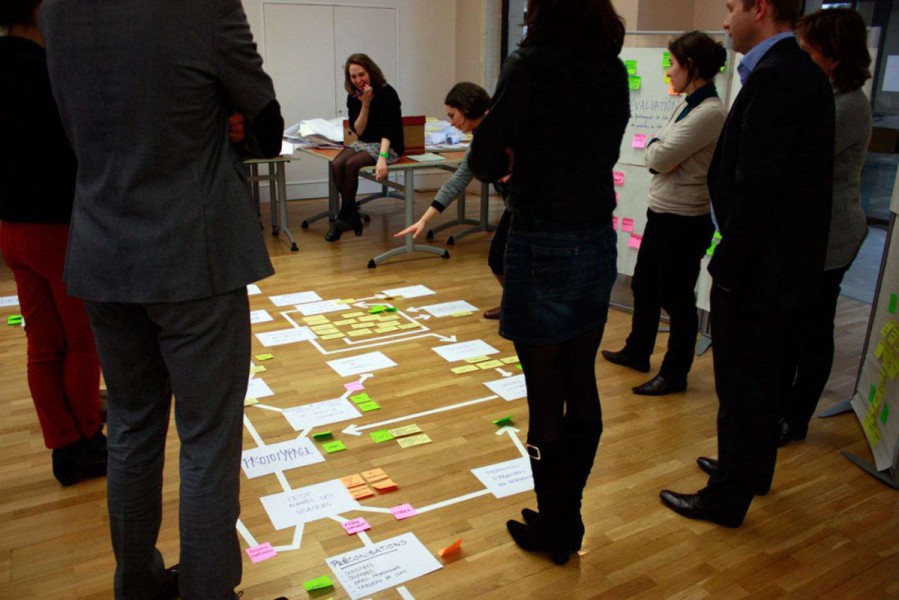As in many other fields, “labs” have became the new Graal for change in public administrations and governments. According to Nesta, around 100 local, regional or national governments in the world have or intend to create their own lab, from South to North and from the smallest organisations to big international institutions like UNDP or the European Commission. But how many will survive, provoke real change and remain disruptive in the long term? The goal of this paper is not to feed the controversy around labs, but rather is a first attempt to explore a small selection of existing programmes and methods that aim to create innovation teams or labs within governments, or even more modestly to provide existing teams with innovation skills. These programmes have been set up by public agencies, foundations or non-profit associations like Nesta in UK, Bloomberg Philanthropies in US, networks of local governments like SALAR in Sweden or smaller organisations like us at la 27e Région in France.*
1. Public innovation labs : why and how ?
Some public managers ask “what is a public innovation lab ?”. But there are two questions that may be more appropriate: the first is “why”, i.e. what are the deep motivations of creating labs within public organisations ? ; the second is “how”, because the road is often more important than the destination.
As shown by Sarah Schulman during Labs2 two years ago, there is a long and vibrant tradition of experimental methodologies in the history of sciences and technology, which has spread to many fields including industry and services. There is no major surprise that the public sector shows a growing interest for these approaches, since many governments are looking for new ways to create more impact. In this context, labs represent a new narrative that reflects the “trial-and-error” and pragmatist mindset that a growing number of people have been waiting for, at least since John Dewey described “the State as a permanent experiment” in 1927 in his book The Public and its Problems.
But there are also specific reasons that could explain the rise of labs. One might be the failure of several institutions in building concrete answers to these challenges, beyond governments themselves: e.g academic research institutions, who appear not be able to transform knowledge into real change ; trade unions, whose representation is shrinking in most countries ; and consultancy businesses, at least international corporations that tend to perpetuate prefabricated ideas. Labs are like DIY projects that have learned from these old models, and combined this knowledge with the best of trends from others such as maker and hacker communities, design practices and the social innovation field.
Another reason is connected to the growing gap between management theories and real practices, which is generating distrust and despair within many administrations. The role of labs is not to add innovative tools to existing organisations, but to transform radically the practice of policy making and to create more meaning and impact for the whole ecosystem. In a period of massive disconnection, labs could contribute to re-synchronising governments with society.
Last but not least, after decades of management and knowledge Fordism, perhaps labs are an attempt to re-internalise collective intelligence capacities within governments in a more reflexive and sustainable perspective – a bit like when cities decided to re-internalise water supplies because they believed outsourcing it was no longer sustainable.
These points have covered the general motivations. Now let’s explore the specific ideologies related to innovation, modernisation and reform of the public sector. All the following remind us that innovation is never neutral and can lead to different visions, for instance :
- In the social innovation field, a certain number of initiatives consider the public sector as a part of the problem rather than of the solution ;
- In the public sector, some name disruption as a change of tools, while others call for a much deeper change in mindset and paradigm in the policy process (e.g “being aligned with your path”, human-citizen-civil servant in the same time, in Radical Change)
- There are “innovation silos” in public organisations, depending on the management / policy making / democratic perspective ;
- There are cultural differences between the levels of government (e.g state vs city level ), country, history and political culture (e.g Sweden vs Italy), the profile of the initiators (e.g private entrepreneur vs public manager).
- Some consider policy making as a science, whereas others consider it to be a craft (and sometimes in between)
- Some focus on problem-solving and solution-delivery processes (e.g iTeams), whereas other focus on problem-searching, characterizing and posing the challenges (e.g Jesper Christiansen, former MindLab now at Nesta)
Some of these visions can be combined, others are antagonists. But all represent possible directions for labs.
2. Labs are the processes that made them
Now the “how” question. You don’t create a lab like public managers used to create “innovation” departments in their organisations before, through a top-down approach. That’s why new practices have been progressively developed and an ecosystem has emerged.
Led by champions like the MindLab born in 2000, a community of practice has grown up and learned from successes and failures. A small but international, geopolitical and business ecosystem now exists and generates value, know-how, events (LabWorks, Labs2, Immersion in Public Design, Future State…), research (e.g in France, UK, Estonia), procurement, public policies, calls (e.g 6 M€ in the new National Investment Programme in France), diplomatic cooperation (e.g between Denmark and Brazil), etc. The key actors are national and local governments (or networks of governments), public agencies, foundations, do- and action-tanks, non-profit associations, academics, etc.
One of the most interesting activities of this community is the making of new methodologies and programmes that have been set up, either for one-shot projects (e.g FutureGov), or for systematic and cross-government programmes (e.g La Transfo, Radical Change or Lab’AATF). All these programmes are different in their visions, strategies and methodologies :
Ambitions. Many projects aim at promoting new practices within the administration (Lab AATF, Radical Change), a few ones have the ambition to institutionalise teams and/or create spaces (iTeams, La Transfo, Bloomberg, FutureGov…)
Length and trajectories. Some programmes are short (a few days or weeks) and focus on the very first steps, like Nesta’s “Labs retreat”; some others are medium and long term, between 1 to 3 years and cover all the steps (La Transfo 2 years, iTeams 3 years). All suggest that following a critical path helps to reduce the risk of failure, even if it never guarantees 100% success.
Theoretical mindsets. It’s important but not always easy to investigate what the mindsets are behind all the existing programmes. We can mention for instance empowerment (e.g La Transfo), evidence-based policy (e.g iTeams), serendipity, abductive reasoning – also called “Detectives’ methods” by Umberto Eco (e.g La Transfo) -, learning process (most of the programmes). But most programmes consider trial-and-error and pragmatism as a must.
Methodologies and disciplines. All kind of professionals and practitioners are working in the programmes, in many kinds of disciplines : core profiles may include traditional change management or project management, but more and more are connected with sociology, ethnography, human-centric design (interaction design, service design, management design). They can also include data-scientists, participatory urbanists and architects, artists, activists, journalists, ethno-videasts, etc. Most programmes use “double-diamond” style processes. There are some debates and controversies, e.g between service design and design thinking, with the latter often qualified as “post-it design”, disconnected from real change. More generally, cross-disciplinarity is systematically encouraged.
Activities. Most programmes include practical and coaching activities. Some programmes are more focused on indoor activities, some others on outdoor activities (e.g creative immersions inspired by ethnography). Programmes like iSchool (Nesta) are proposing online activities through MOOCs. All programmes include hands-on activities.
Business models and governance. There is a huge gap between very small programmes (a few thousands euros) and 24 or 36-month programmes (from 200 000 € like La Transfo to 3 Million $ like iTeams), also between one-shot (FutureGov) and cross-administration programmes (iTeams, la Transfo, Radical Change, Lab AATF…). But whatever the cost, the origin of the funding is critical and determines who owns the power of decisions. Some programmes are funded as research-action projects by public resources (La Transfo) ; others are grantfunded and/or run by private foundations (Bloomberg Philanthropies) or public institutions (calls from the European Commission), others are traditional consultancy but might include property rights and royalties (e.g FutureGov). Except when it’s from digital investments, few public or private investors are funding labs.
3. Conclusion : Food for thought for the next generation of lab methods and programmes
What does this quick analysis tells us in terms of future developments ? Here are a few possible directions.
Tips for labs
A certain number of books (e.g Design for Policy, 2014), reports (e.g Conseil et recherche 2016), papers (e.g those shared on LabNotes by Nesta) suggest some strategies, principles, tactics and tips for creating successful labs. Are we happy with this ? What are we missing (for instance on subjects from resilience to political turnover) ? What are the new nodes, the key points we must investigate now ? Would it be possible to go further, to share some robust patterns and at the same time keep the singularity of each project ?
Outputs of labs
How are labs held accountable? Do they require new patterns when it comes to measurement of success ? Should we measure the capacity to deliver solutions, or to frame problems ? Or both ? How do we do that technically ?
New funding models
Labs require long-term investment. Where will it come from in a period of shrinking public budgets ? Should we explore where there is still public money, for instance digital policies ? Or could we build a kind of “public impact bond”, or is that too controversial ? Do we need things like 1% of funding dedicated to action-research in big public projects ?
Becoming systemic
For the moment, Labs are far from succeeding in contributing to systemic effects. How could we create this catalytic capacity earlier in the process ? How could we develop this, both within (deeper in the policy making, but also connecting issues such as management/impact/democratic/well-being together) and outside administration (with other administrations, schools, communities, entrepreneurs, etc) ? What about disruption in related fields like political parties, trade unions, traditional consultancy, academic research, etc ?
————————
* Here is a (small) selection of methods and programmes we will hear about during “Labs builders”, an event organized by La 27e Région and Nesta under the umbrella of Design for Europe in Marseille on June 16 and 17th :
- Bloomberg Philanthropies (USA) : Innovation Teams
- Nesta (UK) : Creative Councils ; Labs Retreat ; LabWorks ;
- La 27e Région (FR) : la Transfo
Methods and programmes for skills, transferring knowledge within governments
- Design Council (UK) : Public sector acceleration programme
- Nesta (UK) : Innovation Skills ; i-school.
- SALAR (SE) : Radical Change (1 & 2)
- AATF (FR) : Lab’AATF
- La 27e Région : Territoires en Résidences
This paper was presented with the following Keynote presentation :
Here is the movie made from this workshop in Marseille.




